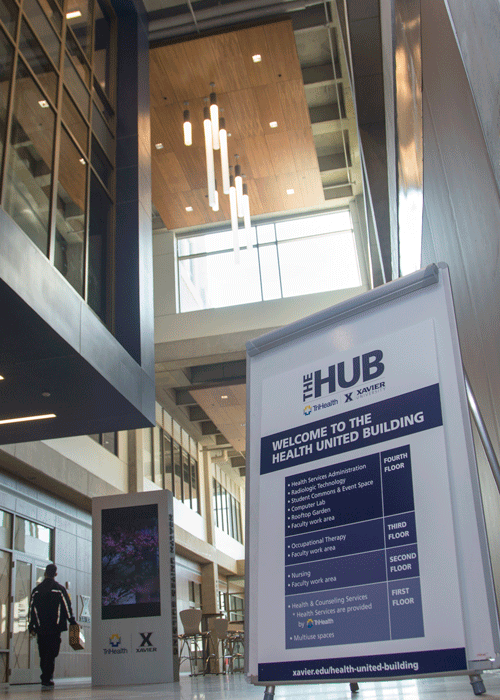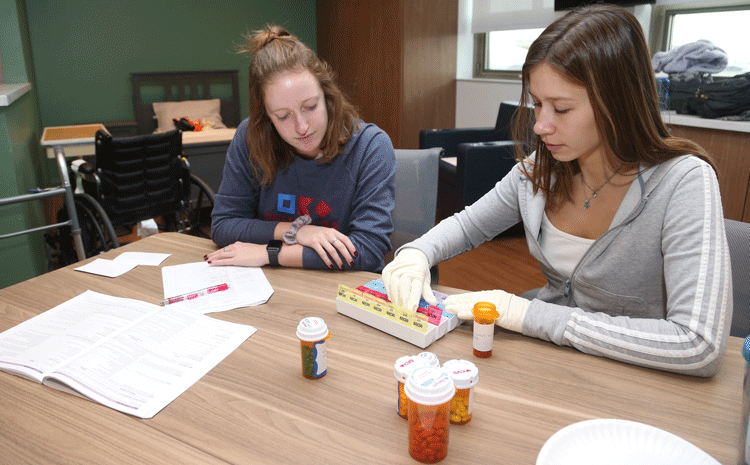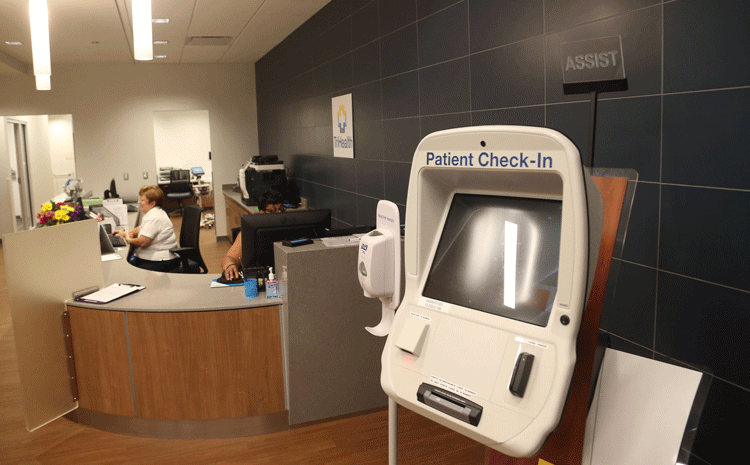
A Bright Future for the College of Professional Sciences
Nov 11, 2019
If it’s true that change is good, then the future is very bright for the College of Professional Sciences. New leadership, new physical spaces and reorganized academic offerings are providing an opportunity for the college to provide even greater transformational experiences for its students.
The changes happened in quick succession. Dean Paul Gore left in June to become Vice President for Academic Affairs and Provost at Bellarmine University in Louisville, Ky. Linda Schoenstedt, EdD, professor of Sport Studies, was appointed interim dean while a search for a new dean takes place.
The long-awaited Health United Building (HUB) opened for students at the end of August, including academic classrooms and Health and Counseling Services provided by both Xavier and TriHealth, the University’s partner in the development of the HUB.
 And the School of Nursing, whose enrollment continues to grow, became a separate college this year, no longer under the administration of the College of Professional Sciences. However, nursing classes are now primarily offered in the HUB, and Sue Schmidt, PhD, nursing’s former director, will be settling into her office in the HUB in January as first director of the college’s new Center for Population Health.
And the School of Nursing, whose enrollment continues to grow, became a separate college this year, no longer under the administration of the College of Professional Sciences. However, nursing classes are now primarily offered in the HUB, and Sue Schmidt, PhD, nursing’s former director, will be settling into her office in the HUB in January as first director of the college’s new Center for Population Health.
HEALTH UNITED BUILDING
Schoenstedt and Associate Dean Cindy Geer are continuing the positive changes Gore set in motion for the college with the visioning and opening of the HUB, which now houses Occupational Therapy, Health Services Administration, and Radiologic Technology—all part of the college—and Nursing.
Additional academic classrooms and lab space for Athletic Training and Exercise Science majors and the Center for Population Health will be available in January when the new Recreation Center side of the building opens for the spring semester. It includes a series of 13 concrete bas-relief sculptures that add an artistic touch to the exterior of the building.
“He deserves a lot of credit for putting the college in the position that it's in now with the opening of a new building and envisioning what that may look like in the future,” Schoenstedt said.
In partnership with TriHealth, the University built the Health United Building to be a model of collegiate health by combining access to health-related academics, recreation facilities, and health and counseling services in one location. The $50 million, 160,000 square-foot building is the home base for almost 1,500 students pursuing their degrees in health-related majors.
For the first time in the history of the University, the HUB brings together students in the health professions to study and learn in common state-of-the-art teaching and learning space, enhancing opportunities to interact with one another across academic disciplines and engage in interprofessional teaming exercises.
“The vision for the HUB is to have a tremendous amount of interprofessional collaboration between the health-related programs,” Geer said. “With our partner TriHealth, we are able to come together and create a strong model of collegiate health that may be exemplary for the region or for the nation.”
CENTER FOR POPULATION HEALTH
The HUB is also the focal point for the newly launched Center for Population Health, which, as part of the College of Professional Sciences, focuses on the health outcomes of a group or population and the distribution of those outcomes within the group. An integral part of population health is interprofessional collaboration and education as it applies to the health of individuals and society. Students in these programs learn to work together across disciplines to improve the health of clients.

Under the leadership of Sue Schmidt, who has raised over $10 million in grants and federal funding for Xavier, the center will focus on identifying priorities and advisory groups—and applying for more grants. The goal is for the center to become a regional, if not national, leader in population health, which is a new model of health care that focuses on preventive care and keeping people healthy as opposed to paying health-care professionals for treating disease.
“It's a great opportunity to give back,” Schmidt said. “The opportunity to collaborate across all interprofessions within our community, region, nation and perhaps globally is exciting.”
TRIHEALTH
Xavier’s partnership with TriHealth, one of Cincinnati’s largest health-care providers, focuses on addressing the changing face of health care in Cincinnati and across the U.S. It’s what made construction of the Health United Building possible and helped improve medical services for students in the HUB’s new Health and Counseling Services.

Xavier faculty are also collaborating with TriHealth leaders to develop academic programs that give Xavier students educational experiences in community health-care settings. One of the goals for the Xavier-TriHealth academic steering committee is to become a model for university health care—not only for students' physical and mental health but also by creating learning opportunities that connect academics, experiences and job opportunities after graduation.
It’s a 360-degree view that looks at the concept of health holistically and includes self-care, academics, job, lifestyle and global citizenship. To that end, the college is already realizing the cross-pollination of departments and programs across the University, such as the doctoral psychology student internship program in the HUB.
Experiences of students like PsyD candidate Lauren Fredriksen, who is working alongside TriHealth physicians in the HUB, reflect the goals of the strategic plan for the HUB to become a place for functional integration of academics with health and counseling services and rec sports. As such, the partnership has the potential to benefit everyone—students, Xavier, the community and TriHealth—and illustrates what can be done when two like-minded institutions come together and focus on the greater good.
Learn more about the College of Professional Sciences at Xavier.